-
Groundwater deficit growing in important western U.S. aquifers
By 2050, climate change will increase the groundwater deficit even more for four economically important aquifers in the Western United States, a new report says. Groundwater deficits are expected to worsen in four important aquifers, creating a precarious balance between usage and recharge. The new report is the first to integrate scientists’ knowledge about groundwater in the American West with scientific models that show how climate change will affect the region.
-
-
Mosul dam could collapse at any time, killing 1m people: Engineers
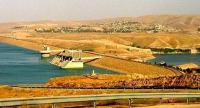
Iraqi civil engineers familiar with the Mosul dam are warning of the dam’s imminent collapse, saying that the consequent death toll would likely be worse than earlier estimated. The engineers warned that the loss of life from a sudden collapse of the Mosul dam could be higher than earlier official estimates of 500,000, as many people could perish in the resulting mass panic. If the dam collapses, a 20-metre-high flood wave would hit the city of Mosul, then roll on down the Tigris valley through Tikrit and Samarra all the way to Baghdad.
-
-
Water storage strategies in Sub-Sahara Africa
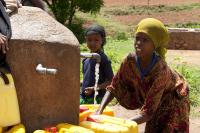
Direct abstraction of water from rivers through ponds and pumping devices seems the most attractive water storage option in Ethiopia. However, the funding agencies that may be interested in investing in such a storage system have to consider that better access to credit, and clear abstraction policies should be ensured.
-
-
Air data can be used to reconstruct radiological releases
New research demonstrates that experts can use data from air sampling technology to not only detect radiological releases, but to accurately quantify the magnitude and source of the release. This has applications for nuclear plant safety, as well as national security and nuclear nonproliferation monitoring.
-
-
Using device “fingerprints” to protect power grid, industrial systems
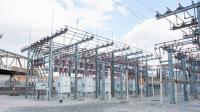
Human voices are individually recognizable because they are generated by the unique components of each person’s voice box, pharynx, esophagus and other physical structures. Researchers are using the same principle to identify devices on electrical grid control networks, using their unique electronic “voices” — fingerprints produced by the devices’ individual physical characteristics — to determine which signals are legitimate and which signals might be from attackers. A similar approach could also be used to protect networked industrial control systems in oil and gas refineries, manufacturing facilities, wastewater treatment plants and other critical industrial systems.
-
-
Calculating monetary losses from floods caused by sea level rise
Damages from extreme events like floods are even more relevant than the mean sea level itself when it comes to the costs of climate impacts for coastal regions. However, while it is now rather well understood how sea-levels will rise in the future, only small progress has been made estimating how the implied damage for cities at the coasts will increase during the next decades. Scientists now provide a method to quantify monetary losses from coastal floods under sea-level rise. For the first time, the scientists show that the damage costs consistently increase at a higher rate than the sea-level rise itself.
-
-
WikiLeaks list not connected to terrorist attacks

The WikiLeaks organization was criticized for providing a target list for terrorists when it published a secret memo in 2010 with 200 international sites that the U.S. Department of Homeland Security considered critical to national security. Was there any truth to that claim?
-
-
Chlorine-free water tastes better, and may be healthier
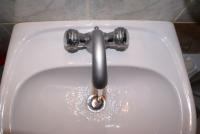
Chlorinated tap water is the norm around the world, but the experiences of several European countries is that it does not have to be. The benefits of foregoing chlorine include better-tasting and, potentially, healthier water.
-
-
Calif. gas well blowout caused U.S. largest methane release, study finds
The Aliso Canyon natural gas well blowout released more than 100,000 tons of the powerful greenhouse gas methane before the well was finally plugged 11 February, according to the first study of the event. The results confirm that it was the largest methane leak in U.S. history.
-
-
Sea-level rise in twentieth century faster than in any previous century
Global sea level rose faster in the twentieth century than in any of the twenty-seven previous centuries, according to a new study. Moreover, without global warming, global sea level would have risen by less than half the observed twentieth century increase and might even have fallen. Instead, global sea level rose by about 14 centimeters, or 5.5 inches, from 1900 to 2000. This is a substantial increase, especially for vulnerable, low-lying coastal areas.
-
-
Virginia Tech continues addressing water crisis in Flint, Michigan

Last summer, a Flint resident reached out more than 500 miles to Virginia Tech for help, after officials said the orange water flowing into residents’ homes was OK to drink. That first round of testing was a wake-up call to the nation. Virginia Tech students and discovered more than 133 times the amount of lead on average was in the water than the maximum allowed by the U.S. Environmental Protection Agency (EPA).
-
-
New tool for coastal planners preparing for sea level rise
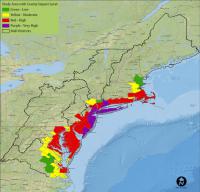
Scientists have developed a new model to help coastal planners assess the risks of sea level rise. Put to use on a global scale, it estimates that the oceans will rise at least twenty-eight centimeters on average by the end of this century — and as much as 131 cm if greenhouse gas emissions continue to grow unchecked.
-
-
Experts tackle U.K. flood risk
The U.K. Blue-Green Cities Research Project combines the expertise of academics from nine U.K. universities plus partners in the United States and China specializing in flood inundation modelling, computation fluid dynamics, sediment debris processes, river restoration and habitats, urban drainage infrastructure, environmental economics, uncertainty, flood risk management, and stakeholder engagement. The project’s goal is to make U.K. cities more resilient to flooding.
-
-
Predicting clay swelling for better nuclear waste disposal
Bentonite clay is planned to be used as a key barrier in the deep geological disposal of high-level nuclear waste. To ensure the safety of disposal, it is crucial to understand and predict the swelling behavior of bentonite clay. The swelling property, however, is regulated by multiple structural and environmental factors. A new model simulates the atomic-level interactions among the components of clay-water system, reproducing the swelling trends and swelling pressures measured by experiments with good accuracy.
-
-
Protecting Earth by crashing spacecraft into asteroids
Asteroids headed for a collision with the Earth, if found early enough, can be acted upon to prevent the potentially devastating consequences of an impact. One technique to divert an asteroid, called kinetic impact, uses a spacecraft to crash into the body at high speeds.
-
More headlines
The long view
Helping Strengthen America’s Critical Infrastructure
Everyday life depends on a robust infrastructure network that provides access to running water, communications technology and electricity, among other basic necessities. The experts who keep our national infrastructure secure and resilient also need a strong network to share their knowledge and train the next generation of professionals capable of solving complex infrastructure challenges.
AI and the Future of the U.S. Electric Grid
Despite its age, the U.S. electric grid remains one of the great workhorses of modern life. Whether it can maintain that performance over the next few years may determine how well the U.S. competes in an AI-driven world.
Using Liquid Air for Grid-Scale Energy Storage
New research finds liquid air energy storage could be the lowest-cost option for ensuring a continuous power supply on a future grid dominated by carbon-free but intermittent sources of electricity.
Enhanced Geothermal Systems: A Promising Source of Round-the-Clock Energy
With its capacity to provide 24/7 power, many are warming up to the prospect of geothermal energy. Scientists are currently working to advance human-made reservoirs in Earth’s deep subsurface to stimulate the activity that exists within natural geothermal systems.
Experts Discuss Geothermal Potential
Geothermal energy harnesses the heat from within Earth—the term comes from the Greek words geo (earth) and therme (heat). It is an energy source that has the potential to power all our energy needs for billions of years.
